#1667
Explore tagged Tumblr posts
Text


I went to generate his chart and of course he had something in Rohini nakshatra 🤣

youtube
#adam and eve#garden of eden#paradise#astrology observations#vedic astrology#astrology community#rohini nakshatra#rohini#rohini moon#fallen#angel#satan#paradise lost#fall of men#john milton#1667#poetry#poetic#poem#poet#literature#vedic notes#genesis#good and evil#eden#Youtube
25 notes
·
View notes
Photo

The Idea of the Sublime in the Enlightenment
During the European Enlightenment, a concept was developed in philosophy and aesthetics called the sublime. In the arts, literature, and the works of intellectuals, the sublime referred to the awe-inspiring capacity of nature and beauty, characteristics that artists and thinkers sought to replicate in their own work and even to apply to ethics.
The concept of the sublime involves the inherent conflict which comes from an appreciation of beauty with a feeling of awe, astonishment, and incomprehension of the eternal. Philosophers discussed this conflict and suggested that our aim should be the harmonious blending of reason with emotion, and so the sublime became an element of the great shift during the Enlightenment which saw reason come to replace religion as the dominant driving intellectual force.
Origins of the Sublime
The idea of the sublime was revitalised during the Enlightenment thanks to the translation of an ancient text by Boileau in 1672. This text, only rediscovered in 1554, was On the Sublime, then thought to have been written by Longinus, a Greek author of the 1st century CE. J. W. Yolton summarises Longinus' thoughts on the sublime as:
…that quality which gives a distinctive power to works of art and literature; it rest primarily on grandeur of ideas and the capacity for strong emotion, supplemented by certain features of rhetoric; sublimity is the echo of a noble mind and a passionate heart.
(508)
Although he is primarily concerned with poetry and oratory, Longinus also writes about the sublime in nature and how impressive natural features and phenomena like wide plains, rugged mountains, and powerful rivers can bring out in all (or most) of us a pleasure at beholding them and a clearer sense of and proximity to the divine.
The Oxford Dictionary of Philosophy gives the following definition of the sublime: "The sublime is great, fearful, noble, calculated to arouse sentiments of pride and majesty, as well as awe and sometimes terror" (462-3). The sublime then creates a strange mixture of feelings like pleasure, awe, anxiety, personal insignificance, and even fear and terror; think of one's mixed emotions, for example, when standing above a precipice gazing down on a majestic Norwegian fjord.
The idea of the sublime in nature and the arts would capture the imagination of many writers, artists, and philosophers during the Enlightenment. The sublime, with its focus on immense grandeur and unfathomable meanings, seemed at odds with the progress being made by science where discovering nature's laws and order were the objectives of knowledge. Philosophers attempted to reconcile this conflict between emotion and reason and to show that the mind can indeed triumph over nature. A wide range of Enlightenment thinkers considered the sublime as part of their philosophy but here, in the interests of space and clarity, we will consider only three.
Continue reading...
28 notes
·
View notes
Text

MARGARETHA VAN HAEXBERGEN BY GERARD TER BORCH THE YOUNGER (1666–67)
#17th century#art#painting#17th century painting#17th century art#chair#gerard ter borch#1666#1667#Dutch#dutch painting
16 notes
·
View notes
Text

45 notes
·
View notes
Text
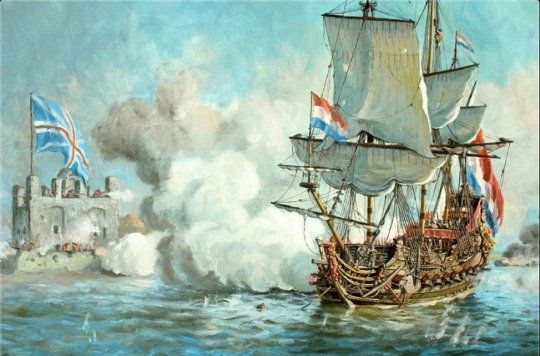
Attack on Chatham, 1667, by Arnold de Lange (1968-)
#naval art#attack of the dutch#chatham#raid on the medway#admiral Michiel de Ruyter#1667#age of sail
70 notes
·
View notes
Text
youtube

Release: August 30, 2019
Lyrics:
We couldn't turn around
'Til we were upside down
I'll be the bad guy now
But, no, I ain't too proud
I couldn't be there
Even when I tried
You don't believe it
We do this every time
Seasons change and our love went cold
Feed the flame 'cause we can't let it go
Run away, but we're running in circles
Run away, run away
I dare you to do something
I'm waiting on you again
So I don't take the blame
Run away, but we're running in circles
Run away, run away, run away
Let go
I got a feeling that it's time to let go
I say so
I knew that this was doomed from the get-go
You thought that it was special, special
But it was just the sex though, the sex though
And I still hear the echoes (the echoes)
I got a feeling that it's time to let it go, let it go
Seasons change and our love went cold
Feed the flame 'cause we can't let it go
Run away, but we're running in circles
Run away, run away
I dare you to do something
I'm waiting on you again
So I don't take the blame
Run away, but we're running in circles
Run away, run away, run away
Maybe you don't understand what I'm going through
It's only me
What you got to lose?
Make up your mind, tell me
What are you gonna do?
It's only me
Let it go
Seasons change and our love went cold
Feed the flame 'cause we can't let it go
Run away, but we're running in circles
Run away, run away
Songwriter:
I dare you to do something
I'm waiting on you again
So I don't take the blame
Run away, but we're running in circles
Run away, run away, run away
Adam King Feeney / Louis Russell Bell / Billy Walsh / Austin Richard Post / Kaan Gunesberk
SongFacts:
👉📖
Homepage:
Post Malone
#new#new music#my chaos radio#Post Malone#Circles#music#spotify#youtube#music video#youtube video#good music#hit of the day#video of the day#2010s#2010s music#2010s video#2010s charts#2019#pop#pop rock#soft rock#downtempo#adult contemporary#indie pop#alternative pop#lyrics#songfacts#1667
7 notes
·
View notes
Text

#paradise lost#poem#john milton#1667#illustrations#gustave doré#das paradies ist nebenan#material#jva#696#books#frankenstein#metropolis#the cell#the lawnmower man#summer storm#lost highway#obst & gemüse oder der kunde ist könig#syberberg
7 notes
·
View notes
Text
Rei nodded in agreement. “Leaders belong to the whole island, not just their home village.”
#november novel#writing tag#1667#i'm gonna try to motivate myself by posting the sentence/passage and highlight whichever word gets me to the word-count goal#it's too early to say what my writing pace will actually be like#but i might post multiple in one day if i manage to get ahead#but like last year i'm not gonna force myself#if i wanna write past the daily goal great if not that's fine#anyways!#fwiw rei is the oc i made to be suki's mentor :)c
3 notes
·
View notes
Text

Letter, oder: Objekte, die lassen
In der Geschichte und Theorie der Letter, so unterstelle ich mit meiner bisherigen Erfahrungen zum Bilderstreit sowie mit der Forschung zu Aby Warburg, ist bisher weder eine Frage noch eine Antwort jemals erledigt worden, hat sich weder jemals eine Idee erfolgreich durchgesetzt noch ist etwas davon jemals endgültig verabschiedet worden. Ab Helmonts Passagen zur Theorie hebräischer Letter markieren eine Vorstellung, nach der ein Letter ein ganz besonderes minores Objekt, ein ganz besonderes Grenzobjekt ist, nämlich eines, an dem Zeichen zu Körperteilen werden, eben weil es in beiden Fällen Glieder sind, insoweit ganz grundlegend Argumente, nämlich solche Objekte, die etwas als erstes oder letztes erscheinen lassen (man sagt, Argument sei dasjenige, was erhelle oder darlege, vorlege und organisiere, sortiere . Die Helferlein, die guten Geister, die kleinen Wesen, die Diener, die Geister, die Hervorbringer, in denen manche die Institutionen schlechthin sehen: Das sollen Letter sein, die wie die sind, denen die Legende von den Heinzelmännchen gewidmet ist.
3 notes
·
View notes
Text
Most Beloved AEW Wrestler Tournament 2
0 notes
Link
Check out this listing I just added to my Poshmark closet: J Garcia Blue print vintage necktie.
0 notes
Text

كان لودولف باكهويسن رسام ألماني تدرب في البداية على يد والده ليصبح ناسخاً. في عام ١٦٤٩، إنتقل إلى أمستردام حيث أمّنت له مهاراته الرائعة في الخط العمل كموظف لدى واحد من أكثر تجار المدينة شهرة. في النهاية قادته براعته الإستثنائية في الرسم إلى ممارسة مهنة الرسام، مما أدى إلى نجاح سريع. كان لباكهويسن شغف خاص بإلتقاط تأثير الطقس على سطح البحر، وهو موضوع قدّمه بخبرة ملحوظة. بحلول الجزء الأخير من القرن السابع عشر، أصبح فنان المناظر البحرية الرئيسي في هولندا منتجاً لوحات بحرية للرُعاة الملكيين والأرستقراطيين عبر أوروبا. يمكننا تقدير موهبته اليوم بهذا المشهد البحري الرائع.
نرى ثلاث سفن شحن من نوع لعب دور محوري في تعزيز الازدهار الهولندي أثناء القرن السابع عشر. حاملة علم الجمهورية الهولندية باللون الأحمر والأبيض والأزرق المفعم بالحياة، تمثّل هذه المركبات الثراء الوطني بينما تتمايل بشكل خطير بالقرب من شاطئ صخري. لقد عانت كل سفينة بالفعل من خسارة صاري ويمكن رؤية أدلة على الحطام في الحطام العائم في المياة الرمادية الفولاذية في المقدمة. لكن وسط الكارثة الوشيكة يظهر بصيص من الأمل، إذ تخترق آشعة الشمس الذهبية السحب النذيرة بالشؤم مشيرة للبحارين المُحاصرين أن العاصفة على وشك الإنحسار. يُعد هذا المشهد تذكير مؤثر بعبور الحياة.
Ships in Distress off a Rocky Coast
Ludolf Backhuysen
1667
0 notes
Text
Year 1667

A letter came in from Antonio early in the year telling Giulia of how his youngest daughter, Luisa, had grown into a little girl which he was happy to write about how his children were faring well all things considered after the plague but since his mother joined them in Henford the previous autumn he was proud to talk about his work on the docks which made Orelia light up as her mother recounted the contents of his letter to her children.
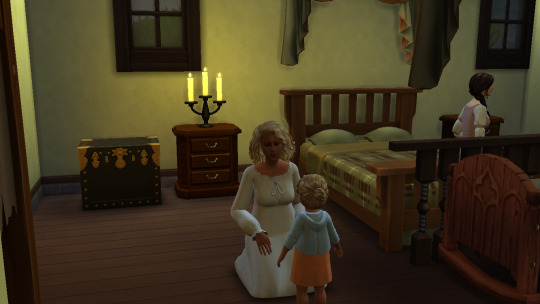

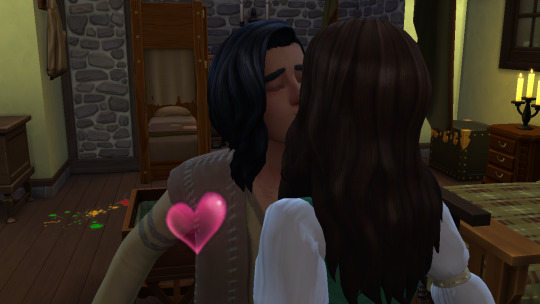
Giuliano shared his first kiss with Ashley as Giulia and Katharine lingered near by to keep things within reason. Katharine rolled her eyes at the blatant displays of affection the young couple stole while Giulia thought it sweet that her son was finding love though she hoped that there wasn't too much love happening as she didn't want another one of her children to have a child outside of marriage though she knew her son would be responsible enough to ask for her hand if that happened, the point was that she wanted them to wait.
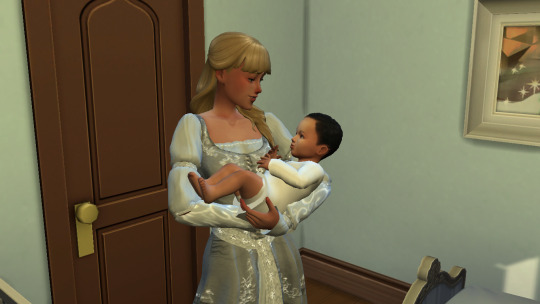
As spring approached, Osana cherished the last time she would care for her son as he would soon grow too old to hide their relationship if she remained in the Collari home. She was happy that he was in good health and that he had a brother to play with. Once she returned home, it would be a new start for her ideally.

Little Cristofolo grew up and very obviously took after Osana though those who weren't in the know about his birth figured that the child merely took after his maternal grandfather as Osana was very much her father's child.

With children taking after their mother's Benetta was no exception. She was an inquisitive child with a passion for learning and while her father wasn't sure how much she would continue to take after her mother, he and Tala appreciated that they could see Felicita in her.
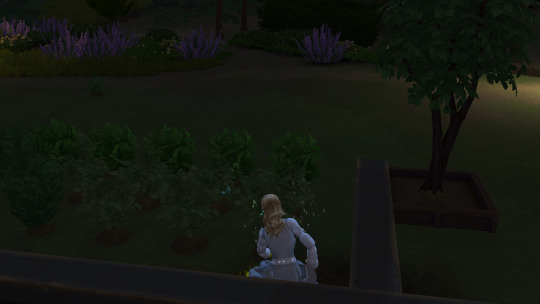
Osana returned to the Morosini home in May and found the farm life to be much harder than she had remembered before leaving to the Collari family.
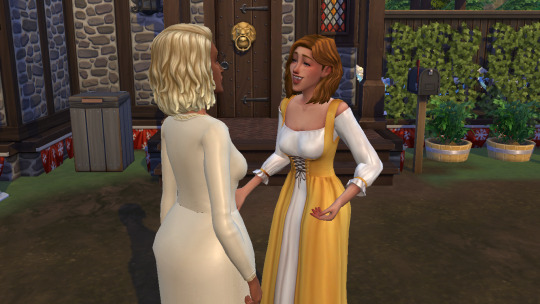

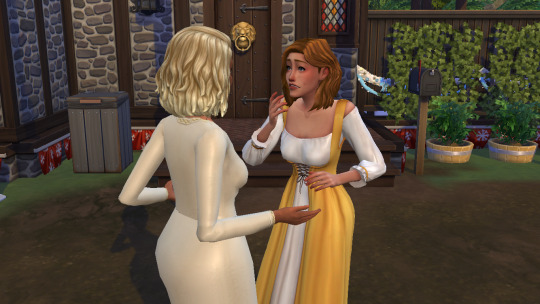
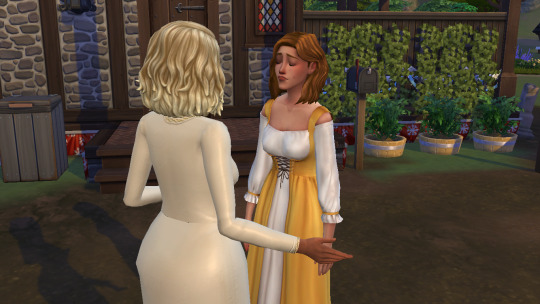
With summer in full swing, Giulia approached Orelia with news that she was planning to see her daughters all wed before their 23rd birthdays since she wanted to make sure that their futures were secure. She had already sent out the notice in Talia's tome so that the other holders of the Tome could help in her search for son-in-laws. Orelia was shocked, she was nineteen so four more years did feel like a significant amount of time but it was also so short and... she wasn't sure she even wanted to marry but her mother looked so happy thinking of seeing her daughters married and established how could she say anything to that?
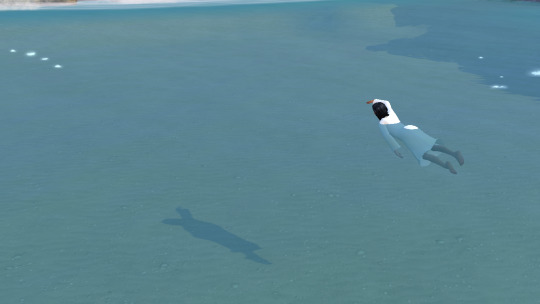
With marriage talks being the focal point of the warmer seasons, Giuliano tried his best to avoid them when he could though he couldn't believe that his friend Katharine was betrothed to Leonardo Ludovici. He thought about his future with Ashley and while he liked their relationship he was still fifteen and didn't really want to consider being an actual adult just yet. He was perfectly content to defer to his mother except when it came to the physical labor he prided himself on being able to complete.
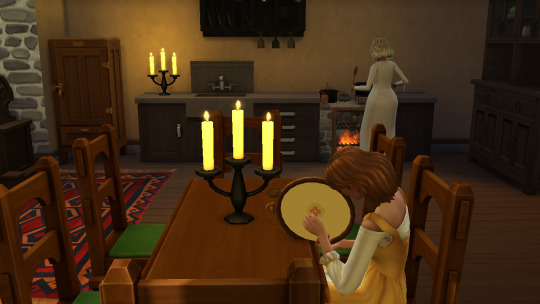
Orelia tried to busy herself with her hobbies to distract herself from her mother's announcement but it hung over her heart like a vise. Marriage... a life as someone's wife where she would likely be beholden to her husband and his will much like her mother... it felt threatening to her.
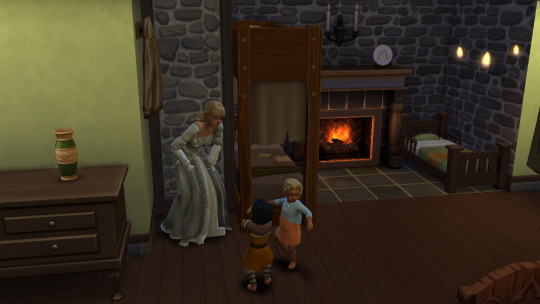
While Osana was very clearly not suited for outdoor work, she loved lavishing her two young siblings with attention and they loved having her around more frequently.


Osana spent a lot of her time at Tala and Orsa's home though looking through Talia's tome speaking with her Uncle and the spirits of her late relatives.

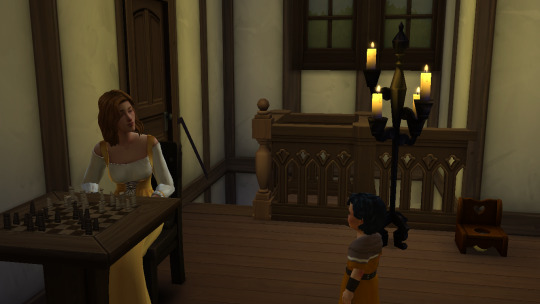
Orelia enjoyed speaking with her baby brother though he wasn't much of a baby anymore. It was an odd feeling watching him grow up because of their large age gap but she delighted in hearing the little one ramble.
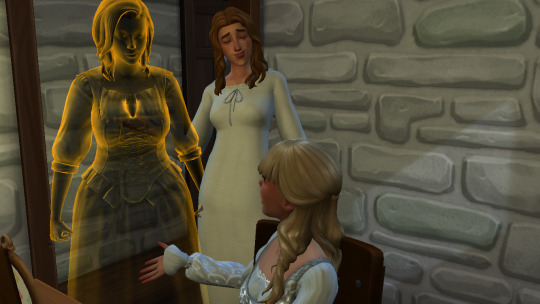
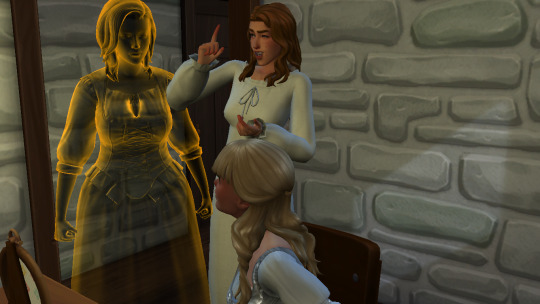
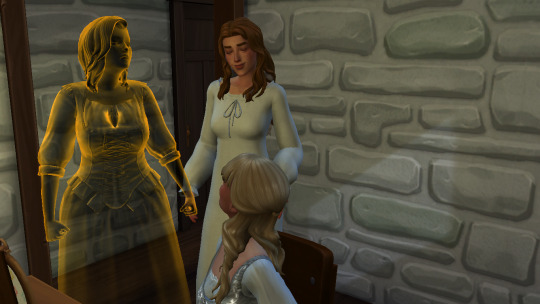
Eventually Osana's correspondence with her Uncle led her to be invited to visit with a guest which when she told Orsa, Orsa and Alexis admonished her saying it was a terrible idea to travel to a foreign land because of wanting to avoid their mother's matchmaking and give her the chance to marry for love. Osana tried to appeal to Orsa's romantic side but Orsa mentioned that she didn't really have the best track record to choosing men which insulted Osana but Orsa did relent to the fact that her sister was an adult who could make terrible choices if she wanted. Osana was insulted that her sister thought her choices were bad but accepted that that was likely the best she'd get from her.

While Osana plotted to leave town with Orelia, who was itching to escape marriage, December snuck up on them and Giovanni Cesare celebrated his sixth birthday with his family.
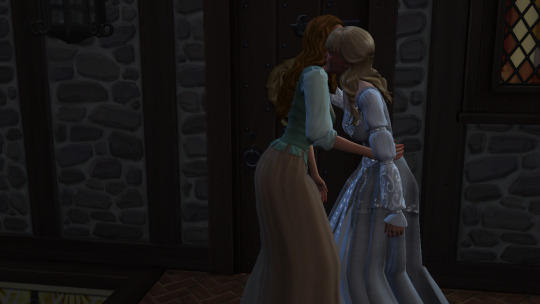
Despite Orsa's disapproval for her sisters' plan to leave town in secret, she still saw them off as the two of them left in the night hours before the new year was ushered in.

#Alexis Carlisle#Giulia Morosini#Osana Morosini#Orsa Morosini#Orelia Morosini#Giuliano Morosini#Ashley Torricelli#Katharine Montez#Giovanni Cesare Morosini#Olimpia Morosini#Luisa Carlisle#Cristofolo Collari#Benetta Ludovici#The Carlisle Chronicles#Decades Legacy Challenge#1667#1660s#ts4
1 note
·
View note
Text
Practice English
share.libbyapp.com/title/117990
View On WordPress
#1667#1850#bookporn#English as a Second Language#ESL#Hester Prynne#Libby#MA#Massachusetts#Massachusetts Bay Colony#MBC#Nathaniel Hawthorne#Pearl#practice English#Puritans#Q#The Scarlet Letter
0 notes
Text
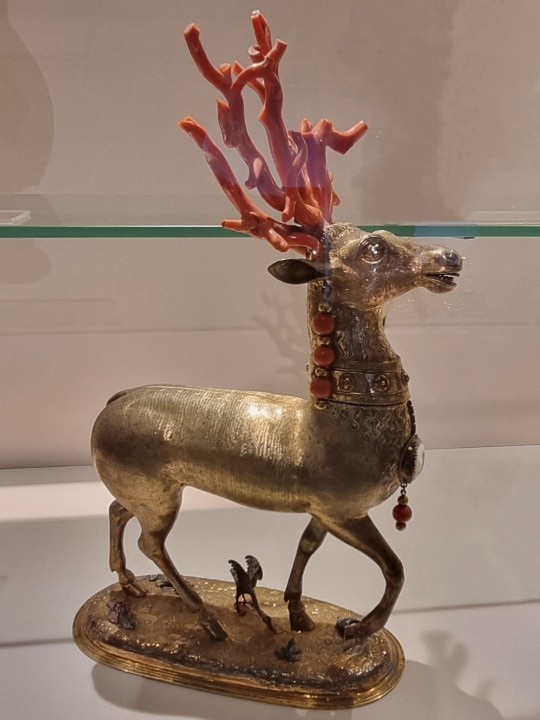

Zochascher Willkomm by Melchior Bayr, Augsburg, 1667, silver, gilt; coral This drinking vessel in the shape of a striding stag, with removable headpiece, is in both design and execution an excellent example of the high level of Augsburg goldsmithing and silversmithing. The necklace, decorated with lion heads and rosettes, forms the rim of the mouth of this idiosyncratic vessel, which was given to distinguished guests at their reception (hence the name Willkomm = Welcome). Zochascher Willkomm von Melchior Bayr, Augsburg, 1667, Silber, vergoldet; Koralle Dieses Trinkgefäß in Gestalt eines schreitenden Hirsches, mit abnehmbaren Kopfteil, ist in Entwurf wie Ausführung ein exzellentes Beispiel für den hohen Stand der Augsburger Gold- und Silberschmiedekunst. Das mit Löwenköpfen und Rosetten verzierte Halsband bildet den Mundrand dieses eigenwilligen Gefäßes, das hochstehenden Gästen zum Empfang (daher der Name Willkomm) gereicht wurde.
#Zochascher Willkomm#Melchior Bayr#Augsburg#1667#silver#gilt#coral#drinking vessel#stag#goldsmithing#silversmithing#Silber#vergoldet#Koralle#Trinkgefäß#Hirsch#Goldschmiedekunst#Silberschmiedekunst#treasury#Teutonic Order#Order of Brothers of the German House of Saint Mary in Jerusalem#Vienna#Austria#Singerstraße#Innere Stadt#1010#Schatzkammer#Deutscher Orden#Deutschherrenorden#Deutschritterorden
1 note
·
View note
Text
The Raid of the Medway, 12–14 June 1667
“And, the truth is, I do fear so much that the whole kingdom is undone”
These were the words of Samuel Pepys Chief Secretary to the Admiralty (1633-1703), taken from his diary entry on 12th June 1667, a stark reminder of the victorious Dutch attack launched on the unsuspecting Royal Navy. This attack became known as the Raid on Medway, a humiliating loss for England and one of the worst in the history of the Royal Navy.
The dates here refer to the Julian calendar used in England at that time.
The Prelude
After the end of the first Anglo-Dutch War in 1654, the restoration of the monarchy had taken place in England with the return of King Charles II (1630-1685). The latter needed financial resources for a government independent of Parliament, which he hoped to gain through the spoils of another war against the United Netherlands. He was supported in this by the ambitions of the Royal African Company to damage the Dutch competition. In the spring of 1665, open warfare broke out. After the initial fighting, the Dutch won the Battle of Four Days in June 1666 and thought they had gained the upper hand. A few weeks later, however, the English fleet regained naval supremacy in the North Sea in the "St. James's Day Fight". As a result, the Royal Navy interdicted Dutch shipping and English captains raided places along the coast. The most famous case occurred on 20 August 1666, when Vice-Admiral Robert Holmes (1622-1692) burned down the village of Ter Schelling on the island of Terschelling and sank 140 to 150 merchant ships anchored in nearby Vlie. This event became known and celebrated in England as Holmes's Bonfire. Afterwards, the English fleet retreated to its own waters.
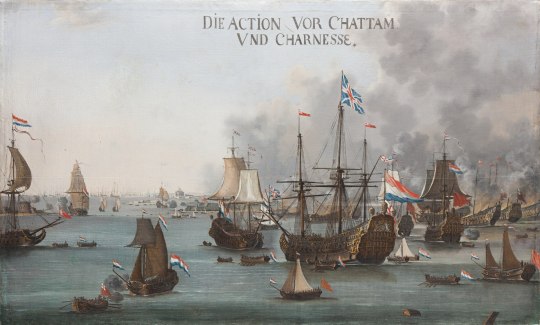
The raid of the Medway, by Willem van der Stoop (–1665) (x)
War weariness grew in the States General as the costs strained the national budget and confidence in the ally France had waned. After the catastrophic losses of the merchant ships at Terschelling, the Dutch opened peace negotiations under Swedish mediation. But English finances were also exhausted. The war had not brought the hoped-for profits, and Parliament refused to grant new funds for warfare after it emerged that some of the money granted had gone to the king's expensive court. Added to this were the losses caused by the severely impaired maritime trade, the great plague epidemic of 1665 and the "Great Fire of London". Against the opposition of Admiral Monck (1608-1670), King Charles II therefore ordered in the winter of 1666/67 that the large ships of the line be dismantled and decommissioned. The war was to be continued only with privateers in order to damage Dutch trade.
Meanwhile, at the peace congress in Breda, the English envoys had been instructed to reach as advantageous a conclusion as possible. Against the background of the last successes in 1666, Charles II dragged out the negotiations in order to end the war with a profit, even though he had had his only means of pressure, the fleet, de-rigged. The United Netherlands were not prepared to make concessions. Soon, however, they came under pressure from elsewhere. King Louis XIV of France (1638-1715) declared war on the Kingdom of Spain in May 1667 and began an invasion of the Spanish Netherlands to appropriate it. The United Netherlands was now forced to bring peace negotiations with England to an immediate conclusion so that it could concentrate on containing French expansionist intentions. To this end, it seemed necessary to Johan de Witt (1625-1672), the council pensioner and head of Dutch policy, to increase the pressure on England by directly attacking the island of Great Britain.
The Plan
The idea of landing troops on the British Isles was not new. Such plans had already been worked out after the victory of the Dutch fleet in the Battle of the Four Days. In the summer of 1666, Admiral Michiel de Ruyter (1606-1676) had taken about 6000 soldiers to the Thames estuary in addition to the fleet, in order to be able to intervene in a supportive manner in the event of a local uprising of the English population against Charles II. But such an uprising failed to materialise, and the transport ships were sent back to Dutch ports after a storm. Only a brief landing on the Isle of Thanet was achieved.
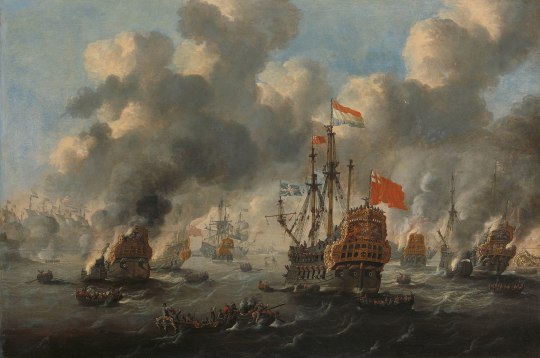
The burning of the English fleet off Chatham, 1667, likely painted by Willem van de Velde the Younger, 1670 (x)
In the summer of 1667, Johan de Witt was well informed by spies about the financial shortages of the English crown and also knew about the decommissioning of most English ships of the line, as well as about the situation of the sailor and dockyard employees who had not been paid for months. Despite his own financial strain, he now prepared the equipment for a Dutch expedition. They were to sail into the Thames Estuary, enter the River Medway and sail to the great dock at Chatham, where many of England's proudest warships lay. Once at their destination, the raiders were to sink or burn as many ships as possible, taking care to capture the best ships as prizes. Such a raid would be a severe blow to the power and prestige of England, for the Royal Navy was the pride of the island nation. Chastened and humiliated by defeat, the English might accept peace on Dutch terms.
The designated contingents of ships were gathered and prepared in various Dutch ports, while in April a squadron under Admiral Van Ghent attempted to enter the Firth of Forth. The main purpose of this enterprise was to provide cover for the main fleet, which assembled at the island of Texel in early June 1667. Admiral de Ruyter sailed along his own coasts, taking in the various contingents as he went. In the end, his fleet consisted of 64 ships of the line and frigates, 15 fireships, 7 escort ships and 13 galliots with a total of 3330 guns and about 17,500 men.
The attack begins
The Assault on Sheerness
The Dutch fleet reached the English coast at Harwich on 7 June 1667. The following day it sailed south along the coast and anchored off the Thames estuary. While doing so, she ran into a storm that forced a large number of ships to cut their anchor ropes and drift. This mainly affected troopships, which were no longer available for the following operations. At a council of war on board the flagship, the further course of action was discussed. Admiral de Ruyter had reservations about sending the entire fleet up the river, as he was not precisely informed about the whereabouts of the smaller English fleet units. Should they return unexpectedly and close the mouth of the Thames, the Dutch fleet would be trapped. Cornelis de Witt proposed that the main force itself should remain off the mouth of the river and a small detachment should guard the English Channel, while a squadron under Admiral Willem Joseph van Ghent (1626-1672) should advance up the Thames. There, this squadron was to attack some West Indian merchant ships at Gravesend, which had been reported by an intercepted Norwegian trader. Admiral van Ghent's squadron consisted of 17 smaller warships, four fireships, some yachts and galiots, and 1000 marines under Colonel Dolman. The squadron set off on the morning of 9 June and initially occupied Canvey Island. However, the wind then shifted and the English merchant ships, which in the meantime had been warned of the approaching Dutch warships, escaped upriver.
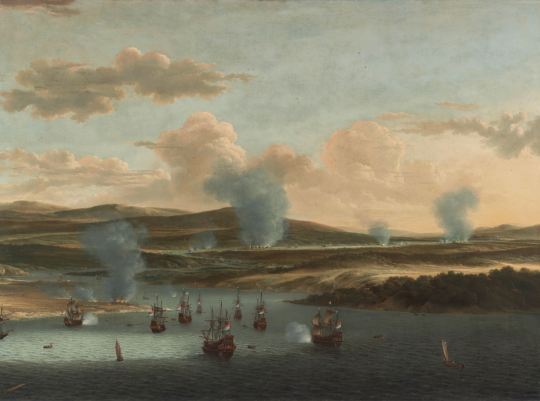
Sail to Chatham, Willem Schellinks, c. 1668 (x)
Cornelis de Witt now urged Admiral van Ghent to enter the Medway and attack the English fleet lying there. The entrance to this river was controlled by a fort still under construction at Sheerness on the Isle of Sheppey. However, to defend this key position, the English had only a weak Scottish garrison, 16 guns, the small frigate Unity and two lightships at their disposal. On 10 June, Admiral van Ghent attacked the fort. The Unity fired only a single broadside and then fled up the Medway, pursued by a Dutch fireship. The Dutch ships took the fort under fire for the next two hours and eventually landed 800 naval soldiers under Colonel Dolman. The fort garrison fled without offering serious resistance to the landing troops and the whole of the Isle of Sheppey was occupied by Van Ghent's forces. The battle for this important position had cost the Dutch about 50 men. The value of the 15 cannons and other goods captured in the process was 400,000 livres or four tons of gold, according to contemporary estimates.
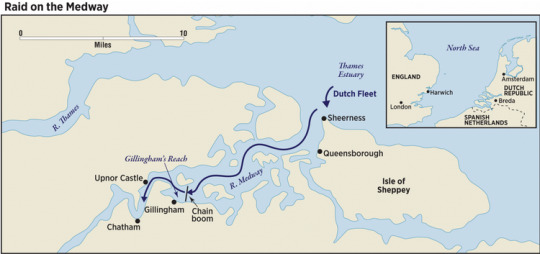
Informed of the events on 9 June, George Monck, 1st Duke of Albemarle (1608-1670) received royal orders to organise the defence. Monck first inspected the installations on the Thames at Gravesend Fort and on the morning of 11 June went to Chatham on the Medway. There he found virtually no organised defence. At Gillingham an iron chain had been drawn across the course of the river, but it was too low. There were only three smaller ships to protect them: the Unity (44 guns), the Charles V and the Matthias (former Dutch merchantmen Carolus Quintus and Geldersche Ruyter). Otherwise, panic reigned. Of the more than 800 dock workers, almost all had fled or refused to help because of their unpaid wages. Out of thirty boats and ships, only ten were still to be found because refugees had used them to escape or local officials had evacuated their personal belongings on them. The Duke ordered the soldiers and officers he had brought with him to set up two coastal batteries on the shore by the chain, but even for this they lacked the necessary tools. To create further obstacles in front of the chain, Admiral Monck ordered fire ships to be sunk there. Two ships, the Norway Merchant and the Marmaduke, were successfully sunk, but the great Sancta Maria, which had also been designated as an obstacle, ran aground. Also on the scene was the large warship Royal Charles (88 guns), but it was completely unarmed.

Stern decoration of the Royal Charles, anonymous, c. 1663 - c. 1664 (x)
Admiral Monck ordered them upriver to safety, but there were not enough personnel to do so. When the Dutch attack came later, she was still lying unmanned on the shore. Among the more than 1100 workers in the docks at Chatham, there were few willing to help. Their pay was months in arrears, as the King lacked the financial means, and now they too refused to serve.
The breakthrough at Gillingham
On the morning of 12 June, the Dutch units began their advance in the Medway. The narrowness of the channel forced the ships to sail one behind the other in a single line. In the lead was the Vrede under the command of her captain Jan van Brakel. The captain had been placed under arrest two days earlier for allowing his men to plunder on the Isle of Sheppey. In order to restore his reputation, he had now voluntarily taken over the top position. Brakel's ship soon came under the crossfire of the three English defensive ships and the two coastal batteries.
However, he steered straight for the Unity without firing and gave her a broadside at point-blank range. The English crew then fled the ship and left it to the Dutch. Under cover of the powder smoke, the two following brander under Brakel's command also approached and sank the English ships Charles V and Matthias in quick succession. The iron chain was subsequently broken during the first ramming attempt (there are some discrepancies in the tradition here, some historians also think that it was simply sailed over because it lay so far in the water and were actually useless).
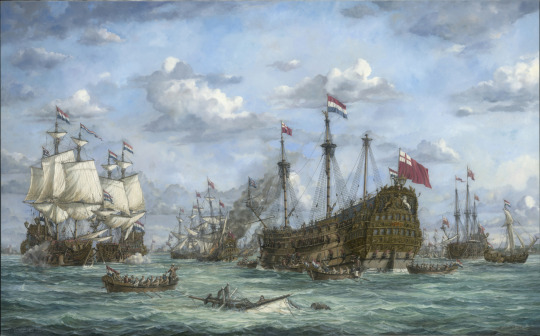
From the left ; "Agatha" , "Beschermer" , "Charles V" , "Propatia" , The "Royal Charles" , "Matthias" and a Dutch Admirals yacht, by Jan de Quelery (x)
The Dutch ships now had free passage up the Medway, because behind the chain there was a wide gap between the sunk English ships, which should have been closed by the sinking of the Sancta Maria. The following Dutch frigates soon silenced the English coastal batteries with their fire, whose fire had been almost ineffective anyway due to structural deficiencies. The biggest prize of the day for the Dutch fleet was the Royal Charles which had often served as a flagship for the English fleet commanders. Btw the Dutch did not take her into naval service because it was considered that she drew too much water for general use on the Dutch coast. Instead the Royal Charles was permanently drydocked near Hellevoetsluis as a public attraction, with day trips being organised for large parties, often of foreign state guests. After vehement protests by Charles that this insulted his honour, the official visits were ended when she was auctioned for scrap in 1673.
Raid at Upnor Castle
Meanwhile, the English were making defensive preparations at Upnor Castle. The Duke of Albemarle and Peter Pett, the commander of the docks, put the castle's guns on standby and set up another battery on the far bank. The attempt to stretch another chain across the river failed. Now they wanted to bring the warships towards Chatham, but again there were not enough men. To at least save the largest warships from capture, the Duke of Albemarle ordered them to be sunk in low water where they could be raised again later.

The Dutch before Upnor Castle, by Jan de Quelery (x)
Late in the afternoon of 12 June, the Dutch advance was halted by the state of the tide. On board the captured Royal Charles, Van Ghent, De Ruyter and De Witt met to discuss further action. These three commanders decided to push further upriver the following day and attack the Chatham Dockyards and the large warships located there. At midday on 13 June, the remaining Dutch braders, protected by four frigates and a larger number of smaller ships, attacked the English positions. They were soon caught in the crossfire between Upnor Castle and the battery hastily raised on the opposite bank of the river. A detachment of naval soldiers landed and moved to attack the English ammunition magazine at Upnor Castle, which they successfully blew up before withdrawing again.
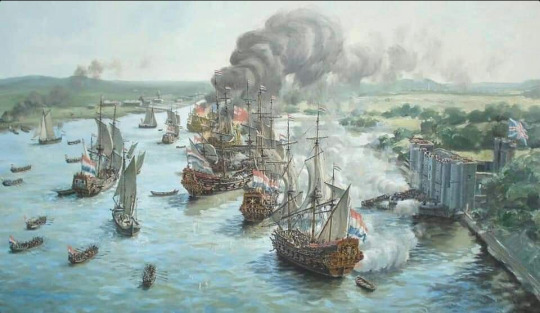
The bombardment of Upnore Castle by Arnold de Lange (x)
In the meantime, the Dutch ships fired on the English gun batteries. While the battle was still going on, a calm set in, forcing De Ruyter and other officers to transfer to longboats in order to direct the actions of their units from them. After a fierce firefight, the Dutch fireships succeeded in attacking the three large warships lying on the shore, Loyal London (92 guns), Royal Oak (76 guns) and Royal James (82 guns). The water in which these ships had been sunk by the English themselves was not shallow enough to offer protection even against an arson attack. All three ships fell victim to the Dutch fireships after their hull crews fled. The Duke of Albemarle, meanwhile, tried to tow the remaining warships upriver under the protection of Chatham's guns. He lined up battle-ready warships on the banks and gathered militia troops to halt the Dutch advance. In fact, the Dutch ships went no further against the stiffening English resistance. Late in the afternoon they retreated with the rising tide as far as Gillingham. There they made the captured English ships Royal Charles and Unity seaworthy and left the Medway on 14 June. The losses from the battle in front of Upnor Castle amounted to about 500 men on the English side, while it is assumed that the Dutch lost between 50 and 150 men.
The aftermath
The Dutch raid on the English ships in the Medway became the biggest debacle of the war for the Royal Navy. It lost more ships than in all previous naval battles combined. The Royal Charles and the Unity had been captured by Dutchmen and the Loyal London, Royal James, Royal Oak, Charles V, Matthias, Marmaduke, Sancta Maria as well as five fireships, two ketches, a fleute and a smaller ship sunk or burnt. In contrast, the Dutch had deployed a total of ten fireships. In addition, there were further indirect losses of the Royal Navy. The Vanguard, for example, had drifted while attempting to ground her and eventually wrecked at Rochester so that she could no longer be lifted. Further north, beyond Gravesend, Prince Rupert had wanted to block the Thames to a possible Dutch advance by sinking the Golden Phoenix, House of Sweeds, Welcome and Leicester there. This turned out to be a sheer waste of important warships, as the Dutch never advanced further than Gravesend. All in all, these losses - especially those of the three large warships - changed the strategic balance between England and the United Netherlands in favour of the Dutch for years to come.
After this success, the Dutch were able to display their unrestricted superiority. One part of the Dutch fleet took action against the English merchant ships on the Channel coast, while another under Admiral Van Nes continued to blockade the Thames for English shipping. In smaller operations, Dutch troops still landed in some places or sailed warships up the Thames in the following weeks.
In London, the events on the banks of the Medway led to a severe economic collapse and panic among the population. Rumours said Chatham was on fire, as were Gravesend, Harwich, Queenborough, Colchester and Dover. Dutch landings at Portsmouth, Plymouth and Dartmouth were reported, and even claims that the king had fled; the Papists were about to take power. Even an imminent French landing was expected.
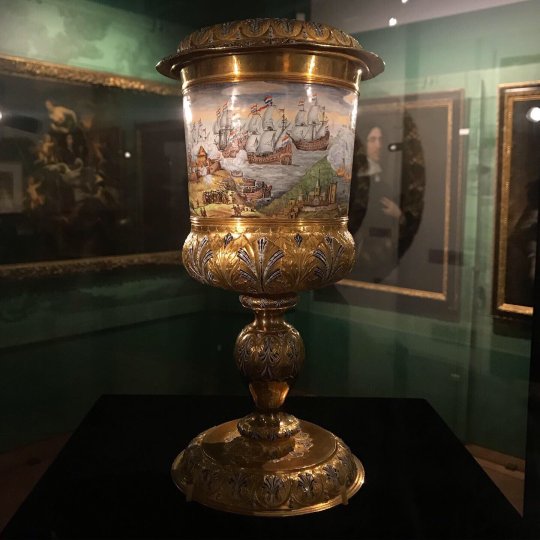
After the Raid on the Medway, Admiral Michiel de Ruyter, Admiral van Ghent and Cornelis de Witt each received a golden cup from the States of Holland (x)
The Dutch had taken up a position in the Thames by which they cut London off from trade. Coal supplies from the Tyne in particular were failing, and soon the price of coal increased tenfold. The English fleet was weakened by the raid and there was hardly any money available for its replenishment. King Charles II therefore had little choice but to instruct his envoys at the peace conference in Breda to conclude the treaty as soon as possible. The Peace of Breda was signed on 21 July 1667, and on 16 August the Dutch fleet abandoned the blockade of the English ports and the Thames estuary in accordance with the treaty. But England’s desire for revenge helped motivate another Anglo-Dutch War the following decade. But also an upgrade of the Navy as well as a change in the pay and living conditions of the Sailors which laid the foundation for one of the most powerful navies in the world.
#naval history#raid of the medway#12-14 june 1667#age of sail#event overview#and it is a very long post#sorry
61 notes
·
View notes